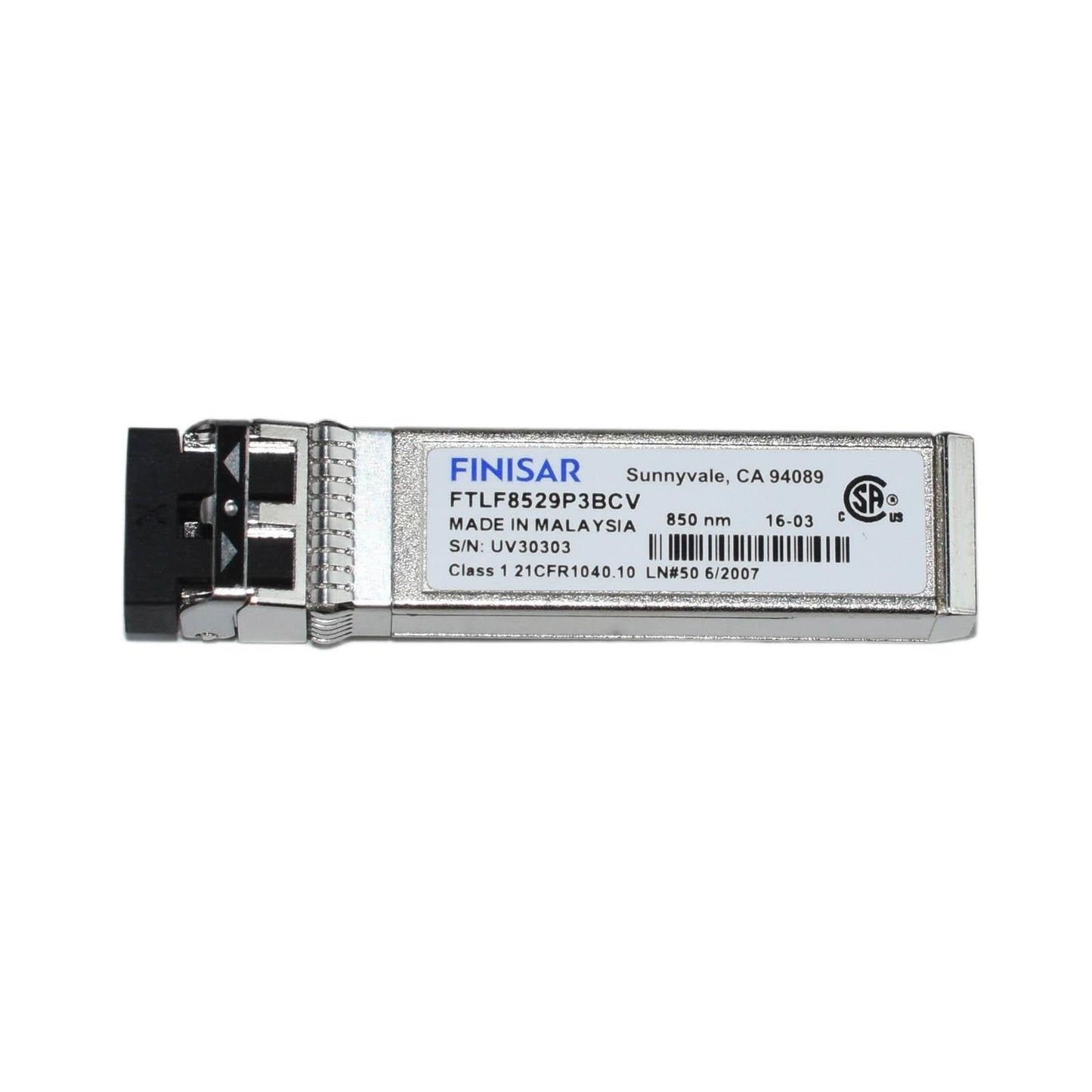Finisar FTLF8529P3BCV 16GbE Multirate SFP+ 850nm LC Duplex Optical Transceiver
88724Finisar FTLF8529P3BCV 16GbE Multirate SFP+ 850nm LC Duplex Optical Transceiver

Finisar FTLF8529P3BCV 16GbE Multirate SFP+ 850nm LC Duplex Optical Transceiver
Finisar FTLF8529P3BCV 16GbE Multirate SFP+ SR 850nm LC Duplex Optical Transceiver
Condition: Clean, tested pull - Guaranteed 100% working!
30-Day Warranty!
Manufacturer's description and specifications:
Finisar’s FTLF8529P3BCV SFP+ transceivers are designed for use in Fibre Channel links up to 14.025 Gb/s data rate over multimode fiber. They are compliant with FC-PI-5 Rev. 6.00, SFF-8472 Rev 11.0 and SFF-8081, and compatible with SFF-8432 and applicable portions of SFF-8431 Rev. 4.1. The optical transceiver is compliant per the RoHS Directive 2011/65/EU.
Product Features
- Up to 14.025 Gb/s bi-directional data links
- Hot-pluggable SFP+ footprint
- Built-in digital diagnostic functions
- Built-in CDR with shut off control
- 850nm Oxide VCSEL laser transmitter
- Duplex LC connector
- RoHS compliant and Lead Free
- 35m on 50/125µm MMF
- 100m on high-bandwidth 50/125um (OM3) MMF
- Metal enclosure, for lower EMI
- Single 3.3V power supply
- Operating temperature range: 0°C to 70°C
Applications
- Tri-Rate 4.25/8.5/14.025 Gb/s Fibre Channel
Regulatory Compliance
Finisar transceivers are Class 1 Laser Products and comply with US FDA regulations. These products are certified by TÜV and CSA to meet the Class 1 eye safety requirements of EN (IEC) 60825 and the electrical safety requirements of EN (IEC) 60950. Copies of certificates are available at Finisar Corporation upon request.
Digital Diagnostic Functions
Finisar FTLF8529P3BCV SFP+ transceivers support the 2-wire serial communication protocol as defined in the SFP MSAf . It is very closely related to the E2 PROM defined in the GBIC standard, with the same electrical specifications.
The standard SFP serial ID provides access to identification information that describes the transceiver’s capabilities, standard interfaces, manufacturer, and other information.
Additionally, Finisar SFP transceivers provide a enhanced digital diagnostic monitoring interface, which allows real-time access to device operating parameters such as transceiver temperature, laser bias current, transmitted optical power, received optical power and transceiver supply voltage. It also defines a sophisticated system of alarm and warning flags, which alerts end-users when particular operating parameters are outside of a factory set normal range.
The SFP MSA defines a 256-byte memory map in E2 PROM that is accessible over a 2-wire serial interface at the 8 bit address 1010000X (A0h). The digital diagnostic monitoring interface makes use of the 8 bit address 1010001X (A2h), so the originally defined serial ID memory map remains unchanged. The interface is identical to, and is thus fully backward compatible with both the GBIC Specification and the SFP Multi Source Agreement. The complete interface is described in Finisar Application Note AN-2030: “Digital Diagnostics Monitoring Interface for SFP Optical Transceivers”.
The operating and diagnostics information is monitored and reported by a Digital Diagnostics Transceiver Controller (DDTC) inside the transceiver, which is accessed through a 2-wire serial interface. When the serial protocol is activated, the serial clock signal (SCL, Mod Def 1) is generated by the host. The positive edge clocks data into the SFP transceiver into those segments of the E2 PROM that are not write-protected. The negative edge clocks data from the SFP transceiver. The serial data signal (SDA, Mod Def 2) is bi-directional for serial data transfer. The host uses SDA in conjunction with SCL to mark the start and end of serial protocol activation. The memories are organized as a series of 8-bit data words that can be addressed individually or sequentially.

